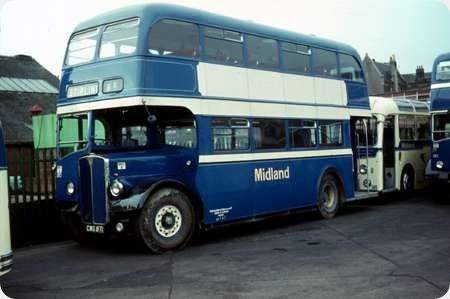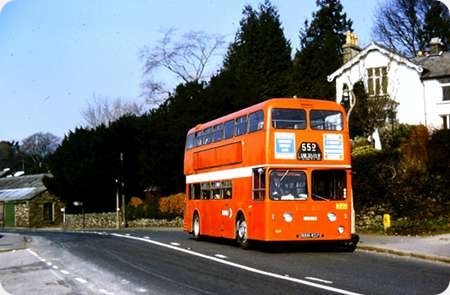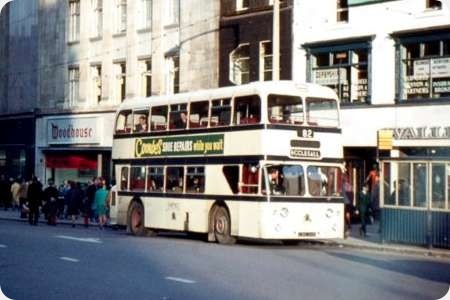Alexander (Midland) – AEC Regent III – CWG 871 – MRC8
W Alexander & Sons (Midland) Ltd
1951
AEC Regent III 09612E
Alexander L27/26R
Although Alexanders purchased significant numbers of Regals and Reliances, they only purchased one batch of 20 double deck buses from AEC, all of which joined the Midland fleet when the company split into three.
As with virtually all the double deckers bought new by Alexanders post war, it has an own-build lowbridge body, and this batch was among the first to carry the new style with a rounded dome compared with the slightly angular earlier style based on the Leyland design.
MRC8 is seen here parked up at Stirling Bus Station on 4 November 1969, and carries a Bannockburn depot plate. It also displays the then relatively new style of ‘Midland’ fleetname, replacing the traditional Alexander style. The traditional Alexander smartness belies 18 years of service; by this stage many of its fellows had already been withdrawn.
The other feature of this bus is that it represents ‘A is for . . .’ for chassis, body and operator, and therefore represents a fitting introduction to a presentation I am giving at the Leicester Transport Historical Trust meeting in Leicester on Saturday 11th April 2015. This is entitled Alphabet Soup, featuring British buses from A to Z in the late 60s/early 70s. Within the alphabet, the main emphasis will be on chassis and body manufacturers, with operator names filling in the gaps, and I shall be highlighting as far as possible unusual rather than standard products. LTHT meetings are held at the New Walk Museum in Leicester, starting at 10 a.m. www.ltht.org.uk/monthly%20meetings.htm
Photograph and Copy contributed by Alan Murray-Rust
10/04/17 – 06:42
The ‘Midland’ (BMMO-style) fleetname is actually the third version to be used after the Alexander company split. The first was an underlined scroll similar to that used originally by Fife and Northern. They then reverted to the traditional Alexander style, but emphasising MidlanD as the middle line rather than AlexandeR. These 20 chassis were diverted from a Scottish Omnibuses order – recompense for the rubbish transferred from SO with the Dundee area perhaps?
Peter Bolton



